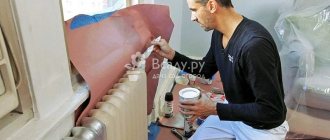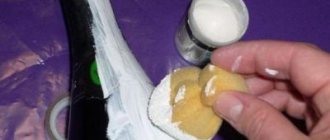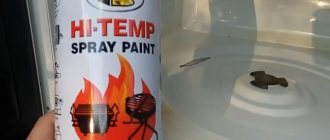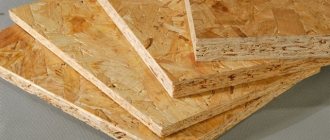Before choosing materials and the method by which you plan to paint a cast-iron heating radiator, you need to decide for yourself what is more important - to ensure the durability and reliability of the metal radiator or to achieve an aesthetic appearance, which, in general, is important, given the fact that radiators and batteries made of cast iron, even new ones from the store counter, are far from the most beautiful.
Painting the internal surfaces of the radiator is difficult and time-consuming
Is it possible to paint cast iron radiators?
It is believed that each additional layer of paint on the surface of a heating radiator reduces its efficiency by an average of 10-15%. After four layers of paint, cast iron battery registers heat up twice as bad as new ones. Therefore, the desire to paint the cast-iron radiators in the apartment for the fifth or tenth time before the start of the heating season should be restrained by reason. Why do useless work, maybe replace the radiator yourself or entrust the repair to a specialist?
Trying to paint the cast iron body of a heating battery with your own hands only makes sense in two cases:
- After installing a new radiator. This must be painted, since most likely the store will sell the battery with a primed surface;
- After a major overhaul of the battery, including eliminating leaks, replacing registers, removing fistulas or depressurizing a connection.
In any case, there is a chance not only to protect the body from rust, but also to beautifully paint the heating radiator, especially cast iron, which requires care and attention. You will need to select the appropriate paint, choose the method of applying paint that is most suitable for home conditions.
It is the last point that always remains a stumbling block. If the registers are in the basement or garage, disassembled, then it is better to paint the cast-iron radiators with powder paint. It looks better and the quality of the coating is much higher. True, in order to paint, you will have to disassemble the radiator, load it and take it to the nearest paint shop at a car service center.
Powder paint gives the highest surface quality; it lasts for 20 years
Professional painters will definitely tell you the best paint for painting cast iron batteries. Perhaps it will be a polyester resin primer or a regular material for painting discs and brake blocks. It is clear that having it painted by a professional will cost a pretty penny, but if done correctly, you can forget for 20-30 years that the cast iron body ever needs to be painted.
The fastest way to paint a radiator
But most often it is not possible to solve the problem using the described method, usually for technical reasons, so you have to look for a way to paint the cast iron batteries in the apartment. At the same time, try not to be poisoned by a toxic solvent and at the same time provide the radiators with a more or less presentable appearance.
Paint requirements for radiators
Let's start with the fact that heating radiators are devices that emit fairly high thermal energy. Hence the basic requirements for paint:
- Increased heat resistance. Experts recommend paints that can withstand temperatures not lower than +100C.
- High resistance to various aggressive environments.
- Resistance to abrasion.
- Safety in terms of effects on the human body. Simply put, complete absence of toxicity.
So, back to the question: what paint should I use to paint radiators? Currently, manufacturers offer three main types.
Enamels based on acrylic components. This type is produced on the basis of solvents of organic origin. That is why, when painting, the paint releases a peculiar pungent odor that quickly evaporates. But the end result is a durable film with gloss that forms on the metal surface. This paint lasts for a very long time. Alkyd type enamels. This is the most common type of radiator paint and is used by a large number of consumers. Its advantages are resistance to abrasion and very high temperatures. Let us add that this type has a huge color palette. However, when dyeing, a strong odor is released that lasts for several days. Some alkyd paints emit a slight odor when heated, so it is worth following the recommendations of specialists when purchasing. Water-dispersed species. All experts agree that these paints are the best choice. Firstly, they do not emit odors, and secondly, they dry quickly
The only thing you need to pay attention to when purchasing is the labeling. The label of the jar must contain the inscription “for painting radiators.”
I would not like to bypass oil paints. Until recently, they were the ones most often used to paint radiators. But their popularity in the past was due to low quality characteristics.
As you can see, the range is not so small, but each consumer decides for himself what to choose. After all, each type has its own advantages and disadvantages.
What paint to paint cast iron radiators
First of all, you need to decide what specific paint can be used to paint the cast iron body. This is quite simple to do; the range is small; three or four main types of paints and varnishes are usually used for heating radiators:
- Transparent alkyd varnish with silver or titanium white;
- Car tint in aerosol packaging;
- Acrylic and water-dispersion paints.
If possible, you can purchase so-called hammer paint. If you paint according to the rules, then after drying the layer will have a shine and a hammered surface. The strength of the hammer mixture coating is much higher than that of standard alkyd or acrylic materials, but the layer thickness is also noticeably higher. Accordingly, paint consumption on cast iron batteries, even if spray painted, will increase by 50-60%.
Silicone-aluminum paint - expensive but effective
Important! This treatment reliably protects the cast iron base of the battery from any mechanical damage, scratches, and exposure to detergents. But you can only properly paint a new, clean battery, without traces of old paintwork.
The only significant drawback of this solution is the unattractive gray color of the battery.
Serebryanka and bronze
One way to properly paint cast iron radiators is to use paints and varnishes filled with metal powder, usually aluminum or bronze. The metal filler in the varnish increases thermal conductivity, while titanium, zinc, and lead oxides often impair heat transfer.
Silver turns out to be the most durable coating
Before applying paint, the surface is not primed, but cleaned to a metallic shine and, preferably, treated with a passivating compound. Before painting cast iron heating radiators with your own hands, rub the metal with a rag moistened with acetone or solvent No. 646.
Alkyd and pentaphthalic paints
One of the most difficult paint and varnish materials, it is possible to paint a cast iron body, but only for 4-5 years of service. The paint is viscous, you have to add a large amount of solvent, otherwise it will be very difficult to paint the cast iron battery inside the registers.
Gives a very thick coating, even with a single painting of the surface. Therefore, if you decide to paint the radiator with alkyd enamel, then it is better to choose specialized compounds and paint in one layer.
Acrylic and water-dispersed paints
On sale you can find special acrylic water-dispersion paints and varnishes. They provide a fairly beautiful coating; if you want to beautifully paint a cast iron radiator, it is better to choose acrylic heat-resistant enamel.
Water-dispersed ones are considered good for processing registers, but it is better not to use them for a cast-iron battery. Water-based emulsion does not protect metal well, and in addition, when intensely heated, it often turns yellow and becomes covered with gray dust.
Why you should not try to paint a cast iron battery
In addition to the options listed, there are at least a couple more types of paint that do not make sense to paint cast iron with. You should not paint with polyurethane and latex paints; they create a very thick layer, which increases thermal resistance and impairs heat transfer. And besides, the material ages very quickly and becomes cracked.
Oil paint has approximately the same properties. During the first two to three years after painting, the paint layer on a cast iron radiator will look absolutely perfect, but the radiator will heat very poorly.
Choice of paint for radiators. comparison table
To paint heating system elements, high-quality paint for heating radiators is used, which meets high requirements. It must be safe, resistant to overheating, cracking and fading. Experts recommend choosing the following types of paints for heating pipes and radiators:
| Types of paints and varnishes (paints and varnishes) | Types of surfaces | Benefits of paints | Disadvantages of paints |
| Oil paints | Cast iron | Affordable price, wide range of colors | Long drying time, strong odor, susceptible to yellowing, cracking and chipping |
| Acrylic enamels | Cast iron, steel, bimetallic | Virtually no pungent odor, high drying speed, attractive glossy shine, rich colors | High demands on the surface to be treated: thorough cleaning and preliminary priming |
| Water-based alkyd enamels | Cast iron, steel, bimetallic | Subtle chemical odor, color fastness | The presence of titanium white for resistance to elevated temperatures, which increases the cost of production |
| Alkyd enamels on solvents (organic) | Cast iron, steel, bimetallic | Withstands high temperatures, wide range of colors, affordable cost | Persistent chemical odor, tendency to yellow |
| Alkyd hammer enamels | Cast iron, steel, bimetallic | High protection of surfaces from damage, resistance to elevated temperatures, durability, affordable cost | Presence of a slight chemical odor that disappears when dry |
| Powder paints | Cast iron, steel, bimetallic | High strength and durability, resistance to temperature influences | The powder composition is applied using professional equipment in a special chamber |
| Silicone paints | Cast iron | Increased heat resistance, durability, wear resistance | High cost, pungent odor |
| Water-based paints | All types | No pungent odor, wide range of colors, high environmental friendliness and safety | High requirements for surface preparation - mandatory degreasing and priming |
| Serebryanka | Cast iron | High temperature resistance, low cost | Persistent chemical smell |
| Aerosol paints | All types | Wide range of colors, ease of application, affordable cost | Unpleasant smell |
What color to paint a cast iron battery
The most popular colors are white, cream, and blue; sometimes owners deliberately paint radiators white in order to improve the design of the window opening under which the battery is located. Dust is clearly visible on a white background, so you have to clean it quite often.
The optimal solution is blue, gray and beige colors. It is possible to paint the battery in darker, black and brown colors, especially since the corresponding paints are commercially available, but one can hardly expect any positive effect from such a color scheme.
Preparing cast iron batteries for painting
Most mistakes made when trying to paint a cast iron radiator relate to improper surface preparation. Painting cast iron and steel surfaces are two big differences, since the paint applies evenly to the steel and provides good adhesion.
For cast iron everything is much more complicated. It will be necessary not only to remove the old paint and primer, but also to thoroughly clean the metal, as they say, until it shines, and degrease the surface with the available hot water with soda and solvent.
The metal will need to be cleaned until it shines.
You can remove old paint using a brush attachment on a drill with bronze bristles, or try using an industrial hair dryer and the same metal brush. It is impossible to use chemical paint removers or firing with a gas torch, since with severe overheating or the use of acidic solutions, the seal between the sections will burn out first.
Do cast iron batteries need to be primed before painting?
If the battery is new and covered with factory primer, then there is no point in removing the layer. Most often, the quality of priming in a factory environment is higher than what can be achieved at home.
One of the best types of soil
The only exception is preparation for nitro paint. Usually the metal is cleaned and rubbed until shiny, after which a primer is applied based on zinc powder and nitro varnish, diluted two to three times stronger than required according to the instructions. This preparation ensures good adhesion of the nitro paint to the cast iron surface of the battery.
In other cases, it is recommended to cover a clean new or well-cleaned old battery with a thin layer of primer.
In order to obtain good adhesion, the primer is diluted one to one with P647 and rubbed into the surface with a dampened cloth. The layer of soil will turn out to be very thin, almost colorless, but this does not affect its characteristics. The paint will stick as well as on a thick layer, and the thermal resistance will decrease by 30-40%
How to properly paint old cast iron radiators
You can paint a cast iron battery quickly or efficiently. If you need to get the job done as quickly as possible, it is better to use a spray bottle or aerosol can to paint the rims. One cast iron battery will require at least two standard cylinders, which is approximately 250 g of paint.
The advantage of this method is a very thin paint layer and a high-quality glossy sheen. In addition, it is possible to paint even the most difficult to reach places, and do the job in a maximum of 10 minutes.
It is much easier to paint a cast iron battery using a spray gun, but at home or in an apartment, using a spray gun or air spray creates a lot of problems, so it is better to immediately abandon such technologies.
If you have a choice, it is best to paint the battery with a brush with very stiff bristles, no rollers or any other similar tools. The inconvenience of using such a brush is that the bristles splatter the paint a lot, so you have to take it in small portions and carefully rub it on the cast-iron surface. Working with such a tool is not very comfortable, but in any case, a hard brush allows you to qualitatively paint the oldest cast-iron battery that exists in the house.
In addition, a small brush with short, stiff bristles is very convenient for painting the inside surface of the registers. If you try to do this with a regular paint brush, most of the paint will simply flow onto the floor.
Important! The rigid base of the brush ensures good squeezing of air from under the paint layer, so after drying the paint layer will be thin, without cavities or peeling.
How to paint an antique cast iron battery
In order to give the radiator the look of an antique heater, you need to choose the right paint color and texture. For example, you can try to design the battery in the form of a product made of non-ferrous metal, brass or copper. This will require special fillers that imitate a copper surface. You will have to paint in at least four to five layers, with intermediate polishing of each. The result is a cast iron battery very similar to the copper heat exchanger used for heating 150-200 years ago.
Antique water heating radiators often had decorative patterns; the manufacturer’s inscriptions were necessarily made on the surface, stamps and other attributes of individual production were placed. You can try to reproduce all this using stickers cut out of foil.
The decor will have to be glued to a protected cast-iron surface using heat-resistant adhesive compositions, for example, epoxy resin. After painting, the cast iron radiators will look very similar to an antique radiator.
Calculation of the required amount of paint
Manufacturers of paint and varnish products always indicate on the packaging the paint consumption per 1 m2, and therefore, knowing the total area of the surface to be painted, you can always determine how much material is needed to apply one layer of coating.
For new devices, this information is usually indicated in the product data sheet, but for older radiators and riser pipes, the paint area will have to be calculated independently.
To determine the area of the pipe, you need to remember the formula for the circumference, which is equal to 2PR or the number P (3.14) multiplied by the diameter of the pipe. The resulting circumference should be multiplied by the length of the riser, which will give the desired result - the area of the pipe surface to be painted.
When determining the area of steel, bimetallic and aluminum batteries of a rectangular shape, there will be no difficulties - just multiply the width and height of the element, but to find the area of a sectional cast-iron radiator, you will first have to calculate the area of one section, adding up the areas of the individual elements, and then multiply the result by the number of sections .
To obtain the required volume of paint, you need to multiply the found total area that you plan to paint by the consumption rate indicated by the manufacturer on the can. If you plan to apply more than one layer, the result should be multiplied by the number of layers.
Interesting ideas for painting cast iron batteries with your own hands
You can give a boring metal radiator a more personalized look with several colors or painting methods. For example, in a children's room, a cast iron radiator can be painted in several colors that best suit the color scheme of the room's interior.
For a good mood
For a hall or living room, it is best to paint the radiator in the style of wall decoration. This will make the heating system, radiator and pipes almost invisible against the background of the window trim.
A design can be applied to the front surface of the radiators, for example, imitating the technique of painting ceramic wall tiles.
In the simplest case, small inscriptions and photo tracings can be made on a white background. Using a stencil and blanks printed on a printer, you can easily turn a cast-iron battery into a cabinet covered with newspaper clippings.
The cast iron body, primed with white water-dispersion paint, can be painted with almost any basic paintwork materials, felt-tip pens, markers, and PVC painting materials. All that is required is talent, an artist's taste and a sense of proportion.
Radiator paints and necessary tools
Many people believe that only the front part of heating radiators should be painted, but, unfortunately, this conclusion is erroneous.
Often, especially with Soviet batteries, rust spots begin to appear, and if they are not eliminated, the corrosion can spread further.
Good paint will help get rid of unwanted corrosion. To find out what paint to paint radiators with, you need to find out the characteristics of this product.
The purchased paint must be resistant to elevated temperatures, because radiators get very hot in winter, and maintain a natural color for a long time.
To choose the right paint and varnish material, you need to know what types are available for sale.
Acrylic paint has a natural color over a long period and is famous for not having a strong odor.
This option is well suited for painting radiators in winter, because you don’t really need to ventilate the apartment.
Alkyd paint has high temperature resistance and is therefore ideal for radiators. One of the disadvantages is the increased smell, so it is better to use it in the warm season, and not during the heating season.
There is another type of acrylic paint that is used in conjunction with a solvent. This material has good performance, firstly, the paint can be used without additional primer, and secondly, the coating has a good appearance and a glossy surface.
The well-known oil paint used to be a popular product, but with the development of the technological process it faded into the background.
This is the main list of paints and varnishes for cast iron radiators that can be purchased. For panel radiators, you can use aerosol paints (preferably auto enamel).
It is no longer fashionable to have white batteries, so do not be afraid to experiment with colors, the main thing is that the coating fits into the design of the apartment.
In a children's room, you can decorate radiators brightly, especially panel radiators, on which you can reproduce the whole landscape.
So how to paint radiators and in what style is up to you.
But it should be remembered that in order for the coloring material to adhere well, you must have a special tool, such as:
- sandpaper for pre-cleaning;
- a sharp object or knife to remove old paint;
- several types of brushes;
- small roller;
- unnecessary rags for cleaning the room.
This entire set will be needed for high-quality work and will help transform old and ugly radiators into a luxurious piece of furniture.









